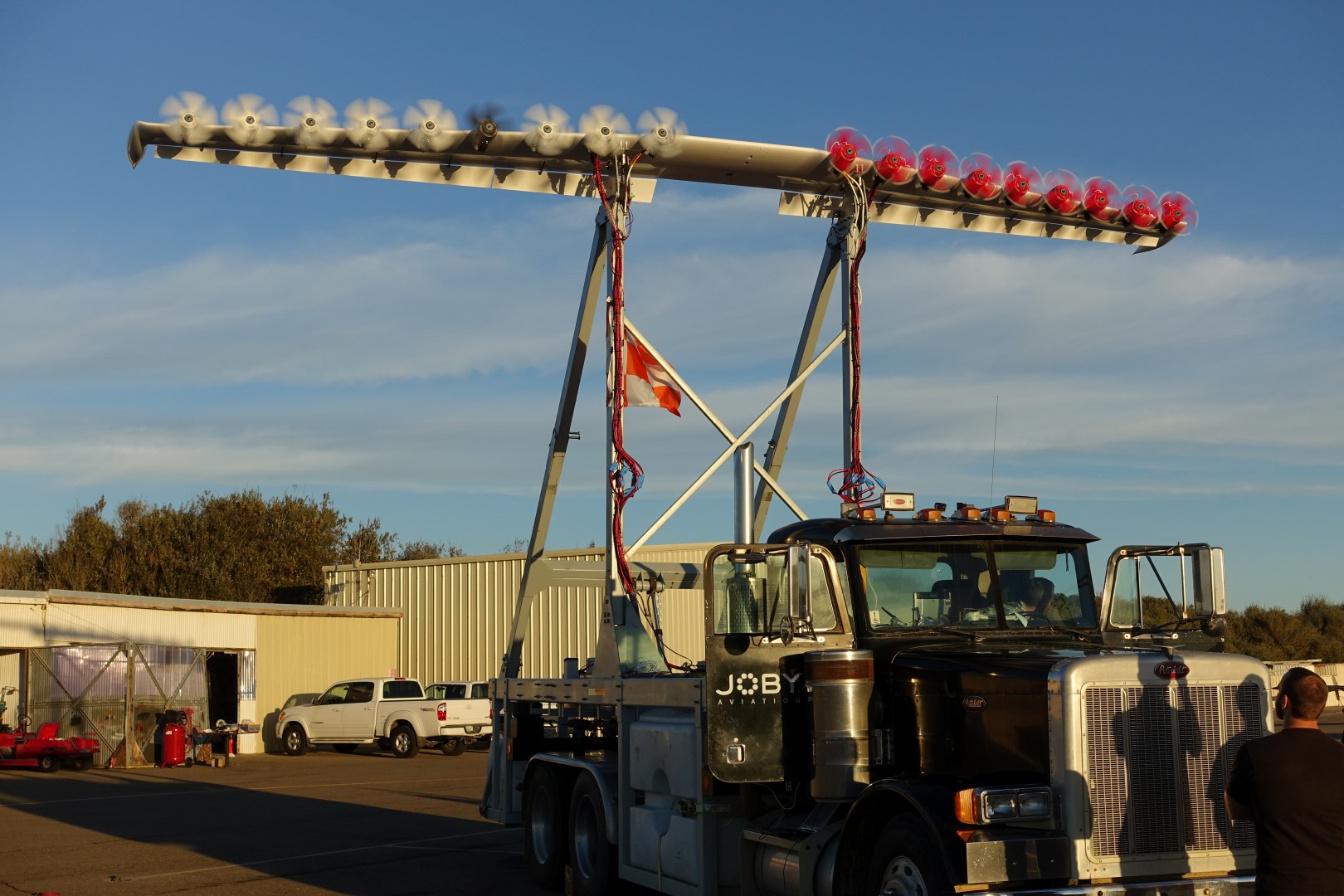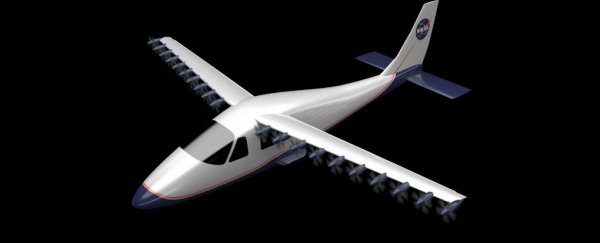For nearly 70 years, NASA's X-planes have been pushing the boundaries of aviation.
And while its most recent concept plane won't break the sound barrier, or set any endurance records, it could help the aviation industry transition to a future where aircraft are powered by electric motors rather than combustion engines.
The LEAPTech plane is still very much in the experimental stages of development. And when it's finished it won't exactly knock your socks off. It will boast a top speed of 320 km/h, a maximum altitude of around 3,500 metres, and when carrying all four passengers, the small aircraft will be able to cover 740 km on hybrid electric power.
What's most intriguing about the aircraft, however, is the design. It has 18 small electric engines distributed across the length of an incredibly narrow wing, with a total surface area slightly greater than five square metres.
As Evan Ackerman points out for IEEE Spectrum, conventional propulsion systems require larger wings - with about three times as much surface area - to increase lift at lower speeds, mostly during takeoffs and landings.
But the rest of the time these large wings are essentially creating drag, causing the aircraft to fly less efficiently. They're also more sensitive to wind gusts while flying, causing a bumpier ride.
In the wing system envisioned by researchers from NASA and partner company Joby Aviation, the 18 electric engines blow, or force, air across the narrow surface of the wing, creating a kind of artifical lift.
This means the researchers can develop aircraft with a smaller wing surface, which is optimised for cruising rather than takeoff. It could mean a 60 percent improvement in fuel economy and a number of other benefits.
In their technical paper describing the LEAPTech aircraft, the researchers wrote that "directly replacing combustion engines with electric motors can impart benefits of simplicity, reliability, low-noise, and low-maintenance."
They also write that the relatively small size and low weight of the electric motors, coupled with the ability to scale them up or down without losing efficiency or power, enables a much greater degree of flexibility in terms of aircraft design than was previously possible with traditional propulsion systems.
"LEAPTech has the potential to achieve transformational capabilities in the near-term for general aviation aircraft, as well as for transport aircraft in the longer-term," said NASA aerodynamicist Mark Moore in a press release.
Right now all NASA has built is a 9.5-metre-long wing section, with 18 motors powered by lithium iron phosphate batteries.
Testing of the experimental wing will not be carried out in a wind tunnel. Instead, the wing section will be mounted on a specially modified truck and driven at speeds up to 110 km/h (70 miles/h) across a dry lakebed at Edwards Air Force Base in California, US. Preliminary testing at 65 km/h took place in January.
 LEAPTech wings mounted on a truck for testing Credit: Joby Aviation
LEAPTech wings mounted on a truck for testing Credit: Joby Aviation
NASA says it hopes to fly a piloted X-plane in the next two years. The plan is to remove the wings and engines from an Italian-built Tecnam P2006T and replace them with an improved version of the LEAPTech wings and motors.
"Using an existing airframe will allow engineers to easily compare the performance of the X-plane with the original P2006T," the NASA press release said.
And while they're moving ahead with a four-seater for trials, the researchers say their wing system could also be integrated onto other aircraft. In their technical paper, they conclude that: "this configuration could provide significant efficiency gains in higher-speed aircraft… as well as larger aircraft."
Bring on the future of electric airplanes!
Source: IEEE Spectrum
